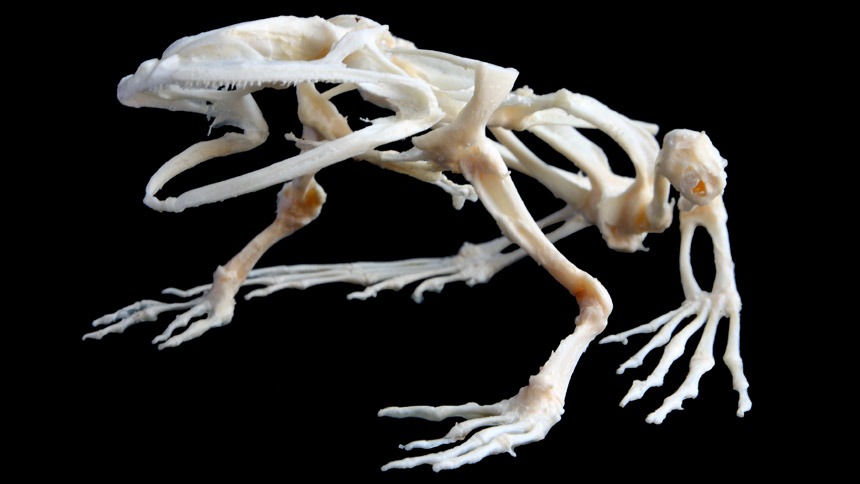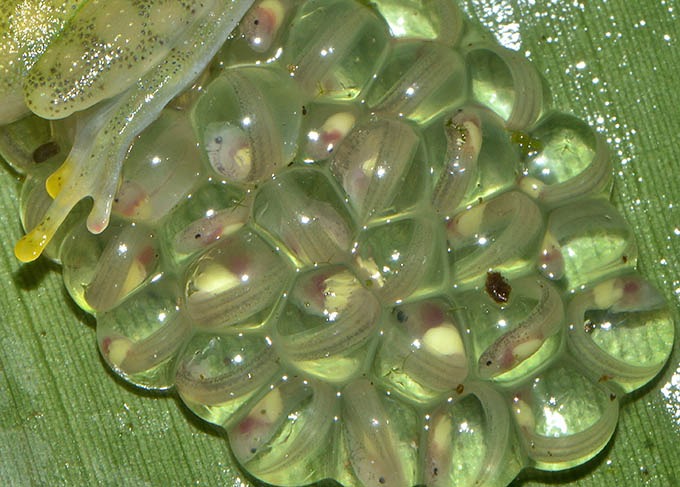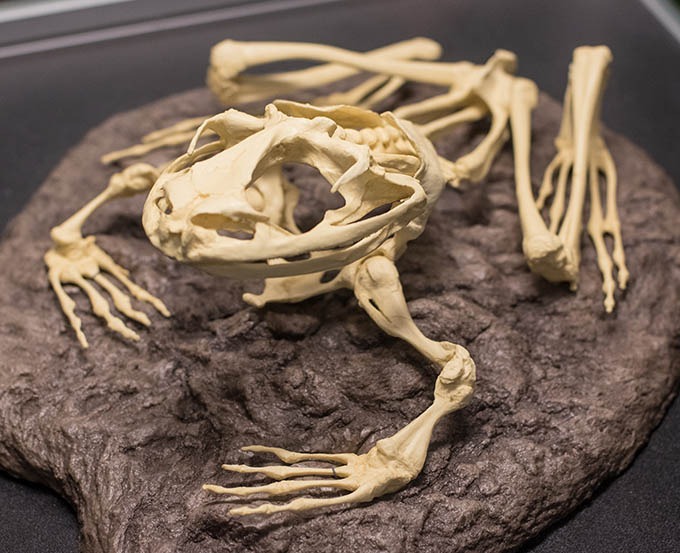
Do Frogs Have Backbones?
Do amphibians have backbones? The last time you needed to know this was most likely for your high school Biology class. And did you really care back then? Probably not. You just needed to pass the test at the end of the week.
If you studied at all, you knew the answer was, “yes, amphibians do have backbones”. So let’s take a look at the facts behind this answer.
Generally, all animals fall into one of two classes; vertebrates or invertebrates. Vertebrates are creatures that have backbones, while invertebrates are those without a backbone.
Among the vertebrates that people are most familiar with are mammals, birds, fish, reptiles, and amphibians. On the other hand, the invertebrates most commonly known by people are spiders and insects.
The amphibian by definition is a cold-blooded, vertebrate animal that falls within a group that is comprised of frogs, toads, newts, and salamanders.
Amphibians start out with a preliminary structure that does not much resemble their adult skeleton. The process of forming the skeleton and backbone is what makes the amphibian so interesting.
Page Contents
From Cartilage to Bone (Metamorphose)
In order to understand the entire transformation of an amphibian’s skeleton and other body parts, let’s examine the life cycle of the frog as one example. What eventually becomes an adult frog begins as a mere egg, which hatches into larvae.

In a short period of time, generally about a week, the larvae will become a tadpole. Tadpoles are fully aquatic beings. Meaning they live underwater only. They survive on a diet of algae and other plant life and resemble a fish more than a frog.
It is important to note at this point that not all larvae will become tadpoles, and not all tadpoles will become frogs. The food chain naturally dictates that a large number of the eggs and tadpoles will be eaten by other creatures, or will die off due to other natural means.
Depending on the type of frog, the tadpoles will remain in their aquatic form for six to twelve weeks. After that time, a process called metamorphosis begins.
During metamorphosis, nearly all the tadpole’s organs change so they can transform from an underwater creature to one that can live on land (terrestrial). Microscopic limbs begin to emerge. This occurs in a similar way as that which takes place in mammal embryos, but much later in the growth process.
Initially, tadpoles have tiny teeth they use to eat plants and algae which are plentiful in the rainy season. During metamorphosis, the teeth disappear, allowing tongue muscles to develop. These are the muscles we see adult frogs use to skillfully catch insects.
Insects make up the frog’s meat-eating diet that replaces the tadpole’s original vegetarian diet. Also, the tadpole’s large intestine shrinks to accommodate the new meat-eating diet.
As the limbs grow, the tail disappears, and a frog-like face
Finally, as part of one of the most fascinating stages of metamorphosis, the tadpole turns into what is considered a froglet. The tadpole gills required to live underwater, make way for lungs, which allow the froglet to live on land. The tail fully disappears and the result is an adult frog.
The Frog Skeleton
Now that we have an adult frog to examine, let’s look at some interesting facts about frog biology as they relate to humans. Although frogs don’t resemble humans in their outward appearance, humans and frogs have many similar organs.
For instance, people and frogs alike, have a heart, lungs, a stomach, a pancreas, a liver, a gallbladder, and intestines. Likewise, human and frog bone structure is quite similar.

Extremities
Human skeletons have four extremities. However, instead of two legs and two arms, as in humans, frogs have four legs. The bone structures are similar in that each extremity contains two sections. One bone that is closest to the torso, then a sort of bend, or elbow-type joint, and a second part of the extremity further from the torso.
Human arms and legs have one larger bone closest to the torso, with two bones at the end of the extremity that run parallel to each other, and work together. The frog’s extremity bones furthest from the torso are fused into a single bone.
Fingers and Toes
The digits of the human and frog hands are similar as well. As we all know, human beings have five fingers and five toes. The frog has five toes on its hind legs, but generally only four fingers on the front legs. Most frogs have relatively long fingers.
Tree frogs have flexible fingers used for climbing, while aquatic frogs have webbed feet that are much better suited for swimming. Other types of frogs like to dig themselves into the ground. Their feet tend to be wider and shorter so they can be used as a shovel to move dirt.
Other Bones
Beyond their extremities, human and frog skeletons begin to show their differences. People, unlike frogs, have a neck. This allows them to move their heads separately from their bodies, providing the advantage of turning their heads to look to the side and behind them.
The frog cannot do this. But the frog can compensate for the lack of a neck by having eyes that can see not just in front of them, but peripherally, and partially behind them.
An initial look at the frog skeleton appears to show a set of ribs just like humans have. But this is not the case. The horizontal bones across the torso of the frog are an integral part of the spine, while human ribs are attached to the spine by cartilage tissue.
Frequently Asked Questions
The following section is meant to answer some of the most frequently asked questions regarding the backbone of frogs.
The frog’s backbone is made of bone just like in humans, but it has some differences. The horizontal bones across the frog’s torso are an integral part of the spine, while human ribs are attached to the spine by cartilage tissue.
Most frogs have a total of 10 vertebrae in their spinal column[1]. In contrast, adult humans have 24. The “Atlas” is the first vertebra while the “Sacral Vertebra” is sometimes considered the last, which is located between the Amphicoelous and Urostyle.
A frog’s backbone is mostly used for support, with some limited motion.
Because frogs have a spinal column, as seen in the pictures above, they are considered vertebrates.
Conclusion
By examining the life cycle of a frog, we can conclude with certainty that amphibians have a spine. A unique spine which is formed in a rather intriguing fashion.
I hope you found this page helpful! If you have any comments or
References
- Hofrichter, Robert. “The Encyclopedia of Amphibians.” The Encyclopedia of Amphibians, Gardners Books, 2000[↩]

Leave a Reply